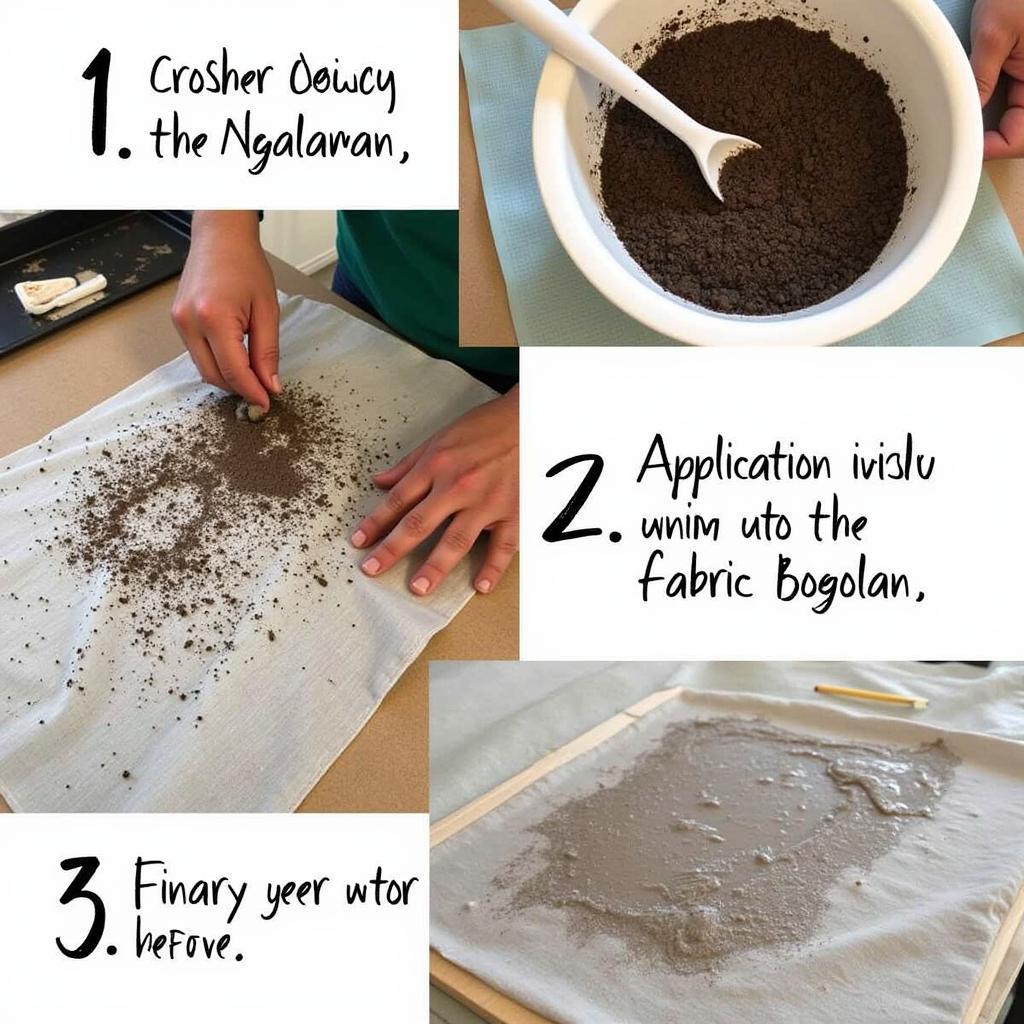Unveiling the Magic of African Bogolan
African Bogolan, often referred to as mud cloth, is more than just fabric; it’s a living testament to West African artistry and cultural heritage. Rooted in Mali, this unique textile boasts intricate patterns and rich symbolism, captivating the world with its earthy tones and timeless appeal. From its origins in the 12th century to its modern-day interpretations, bogolan continues to inspire artists, designers, and fashion enthusiasts alike. Let’s delve into the fascinating world of this ancient craft and uncover the secrets behind its creation and enduring legacy.
The Origins and History of African Bogolan
Bogolan, meaning “mud cloth” in Bambara, the language of the Bamana people of Mali, has a history deeply intertwined with the region’s traditions and beliefs. Its creation is believed to have originated around the 12th century in the Beledougou region of Mali. Legend has it that a hunter accidentally stained his cotton clothing with mud containing fermented leaves and nuts from the Ngalaman tree. To his surprise, the mud reacted with the fabric, creating a permanent dark stain. This accidental discovery led to the development of the bogolanfini dyeing technique, which has been passed down through generations.
The unique dyeing process involves several intricate steps, each contributing to the final product’s distinct character. The cotton fabric is first soaked in a solution made from crushed leaves of the Ngalaman tree. This solution acts as a mordant, preparing the fabric to absorb the mud dye. The mud, collected from specific riverbeds, is then applied to the fabric in intricate patterns using handcrafted tools or even fingers. The mud’s iron content reacts with the tannins in the leaves, resulting in the characteristic black or dark brown hues.  The traditional dyeing process of African Bogolan using natural pigments and mud. The dyeing process not only creates stunning visual effects but also imbues the fabric with symbolic meaning.
The traditional dyeing process of African Bogolan using natural pigments and mud. The dyeing process not only creates stunning visual effects but also imbues the fabric with symbolic meaning.
The Symbolism and Meaning Woven into Bogolan
Every pattern and symbol in bogolan tells a story. The designs, often geometric or abstract, represent aspects of life, nature, and spirituality. For instance, the spiral motif symbolizes energy and life force, while zigzags might represent the path of life or the flow of water. Certain patterns are associated with specific social groups or rituals, further enriching the fabric’s cultural significance. For example, some patterns were traditionally worn by hunters or healers, signifying their roles within the community. The knowledge of these symbols and their meanings was often passed down through families, adding another layer to the rich tapestry of bogolan tradition.
You might want to check out some african fabric earrings made with this beautiful material.
Bogolan in the Modern World: From Traditional Craft to Contemporary Art
While deeply rooted in tradition, bogolan has also evolved and adapted to the modern world. It has found its way into contemporary art, fashion, and interior design, gaining international recognition and appreciation. Artists are experimenting with new techniques and incorporating bogolan into various mediums, pushing the boundaries of this ancient craft. From wall hangings and sculptures to clothing and accessories, bogolan’s distinctive aesthetic continues to captivate audiences worldwide.
How is Bogolan Made Today?
The traditional methods of creating bogolan are still practiced today, preserving the cultural significance of the craft. However, there are also variations and adaptations to the process, allowing for greater accessibility and experimentation. Some artisans now use commercial dyes alongside or in place of the traditional mud, offering a wider range of colors and simplifying the dyeing process. This has allowed for increased production and a wider reach for this unique textile. There are also now african baseball cap using this unique fabric.
Would you like to explore the vibrant african fabric market?
Conclusion: The Enduring Legacy of African Bogolan
African bogolan, a testament to West African creativity and cultural heritage, continues to thrive in the 21st century. From its humble beginnings as a functional textile to its current status as a celebrated art form, bogolan’s journey is a testament to its enduring appeal and the power of cultural preservation. By understanding its history, symbolism, and contemporary applications, we can truly appreciate the magic and artistry woven into every piece of African bogolan. You might even want to find an african dress and headwrap.
FAQ:
- What is the meaning of bogolan? Bogolan means “mud cloth” in Bambara.
- Where does bogolan originate? Bogolan originates from the Beledougou region of Mali.
- What is bogolan made of? Traditionally, bogolan is made from cotton fabric dyed with mud and plant extracts.
- What are the traditional colors of bogolan? Traditional bogolan typically features earthy tones like black, brown, and beige.
- How is bogolan used today? Bogolan is used in various ways, including fashion, art, and interior design.
- Where can I buy bogolan? Bogolan can be purchased online, in specialty stores, and directly from artisans.
- How do I care for bogolan? Hand washing is generally recommended for bogolan items.
Looking for some stylish african inspired suits for menused in black panther movie?
Need support? Contact us 24/7: Phone: +255768904061, Email: kaka.mag@gmail.com, or visit us in Mbarali DC Mawindi, Kangaga, Tanzania.

